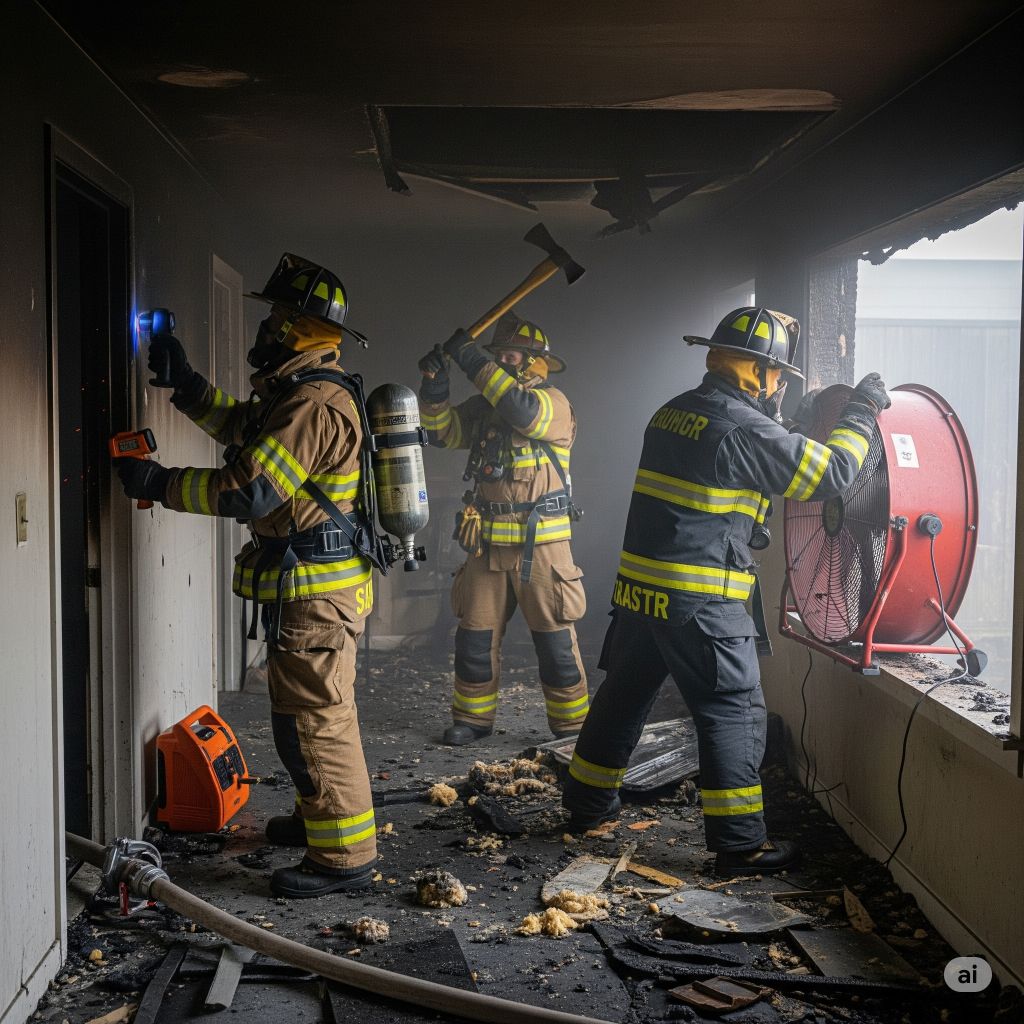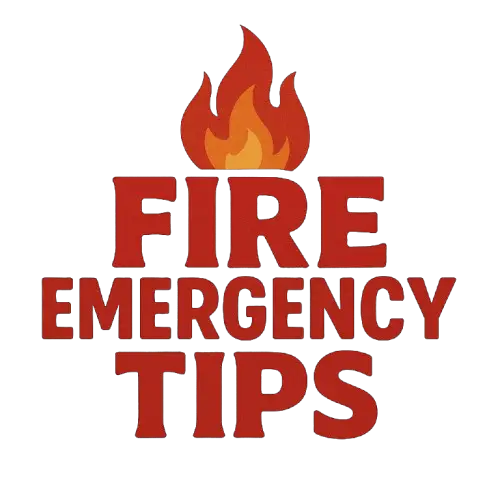
As a firefighter, I’ve witnessed firsthand the importance of fire overhaul in the aftermath of a blaze. When the flames have been extinguished, the work is far from over. Fire overhaul is a critical phase in firefighting that involves searching for hidden embers and hot spots to prevent reignition.
In this article, I’ll delve into the intricacies of fire overhaul and why it’s a crucial step in the firefighting process. From the tools and techniques used to the risks involved, understanding fire overhaul is essential for both firefighters and the general public. Join me as I break down what fire overhaul is all about and why it’s a vital component of firefighting operations.
🔧 What Is Fire Overhaul?
Fire overhaul is the systematic process of searching for and extinguishing hidden fires or smoldering hot spots after the main body of the fire has been suppressed. It involves pulling apart walls, ceilings, insulation, furniture, and other debris to expose embers or unseen flame pockets.
The primary goals of overhaul are:
- Prevent rekindling
- Ensure firefighter and occupant safety
- Preserve property
- Assist in fire cause determination
Overhaul bridges the gap between suppression and investigation, often taking place simultaneously with salvage operations and fire marshal assessments.
Importance of Fire Overhaul
During a fire incident, fire overhaul plays a crucial role in ensuring that the flames won’t flare up again. It involves meticulously searching for any remaining embers or hot spots to prevent a potential rekindling of the fire. As a firefighter, I cannot stress enough the significance of thoroughly conducting this process before declaring the scene safe.
Fire overhaul is not just about putting out the fire; it’s about going the extra mile to guarantee the safety of the occupants and the property. Even though the flames may be extinguished, hidden pockets of heat can persist for hours, waiting for an opportunity to reignite. This is why investing time and effort into fire overhaul is paramount.
A key reason why fire overhaul is essential is to prevent rekindling. Imagine the devastation of a fire that was thought to be extinguished, only to flare back up due to overlooked hot spots. This can endanger lives, destroy property, and put additional strain on resources. Therefore, being thorough in fire overhaul is a non-negotiable aspect of firefighting operations.
Furthermore, a comprehensive fire overhaul not only ensures the safety of the immediate surroundings but also provides peace of mind to residents and business owners. By meticulously checking for hidden embers and hot spots, firefighters can assure the community that the risk of a fire resurgence has been minimized.
Tools and Techniques Used in Fire Overhaul
In the crucial phase of fire overhaul, various specialized tools and techniques are employed to ensure thorough inspection and prevent rekindling of fires. The use of these tools and techniques is instrumental in maintaining safety and minimizing risks. Here are some of the key tools and techniques utilized during fire overhaul:
- Thermal Imaging Cameras: These cameras detect hidden hot spots and smoldering fires, aiding in identifying areas that require further attention.
- Pike Poles and Hooks: Essential for pulling apart debris and reaching into confined spaces to uncover and extinguish any remaining flames.
- TIC (Thermal Imaging Camera) can detect hot spots faster than traditional methods.
- Pike Poles and Hooks are critical for reaching into tight spaces where embers may be hiding.
- Salvage Covers: Used to protect property from water damage during firefighting and overhaul operations, ensuring minimal destruction.
- Positive Pressure Ventilation Fans: Help to ventilate smoke and heat from structures, enhancing visibility and assisting in the overhaul process.
- Hand Tools: Including axes, saws, and other equipment for cutting through materials to access potential hot spots and ensure thorough extinguishment.
Amidst the intensity and challenges of firefighting, these tools and techniques play a pivotal role in the meticulous process of fire overhaul. By employing them effectively, firefighters can significantly reduce the likelihood of fire reignition and enhance overall safety for both individuals and property.
🛠️ Key Tools Used in Overhaul
To perform overhaul effectively, firefighters rely on specific tools, including:
| Tool | Use |
|---|---|
| Thermal Imaging Camera (TIC) | Detect hidden hot spots behind walls or in insulation |
| Pike Poles / Hooks | Pull down ceilings or walls |
| Axes / Halligan Tools | Break through barriers, open void spaces |
| Hose Lines (usually 1¾”) | Extinguish smoldering areas |
| Shovels / Rakes | Remove debris and ash |
| Fans / PPV units | Ventilate smoke and toxic gases |
| Flashlights & Hand Tools | For visibility and manual inspection |
Risks Involved in Fire Overhaul
When conducting fire overhaul, it’s crucial to be aware of the potential risks involved to ensure the safety of both firefighters and occupants. Here are some key points to consider:
- Structural Instability: After a fire, buildings can suffer structural damage, weakening essential support systems. As a firefighter, I always prioritize assessing the stability of the structure before proceeding with overhaul activities.
- Toxic Substances: Smoke residue and charred materials can release harmful toxins, posing health risks to individuals. Proper personal protective equipment (PPE) is essential to mitigate exposure to these hazardous substances during the overhaul process.
- Hidden Hazards: During fire overhaul, there is a risk of encountering concealed hazards such as smoldering embers or compromised electrical systems. I emphasize thorough and meticulous search procedures to identify and address these hidden dangers effectively.
- Exhaustion and Dehydration: Fire overhaul is physically demanding, requiring firefighters to exert significant energy and endurance. It’s crucial to stay hydrated and take regular breaks to prevent fatigue and dehydration during the operation.
- Reignition: Inadequate overhaul efforts can lead to fire reignition, jeopardizing all previous firefighting efforts. As a firefighter, I always ensure comprehensive overhaul procedures are followed to significantly reduce the risk of reignition.
By being vigilant and proactive in addressing these risks, firefighters can navigate the challenges of fire overhaul with a focus on safety and effectiveness.
Why Fire Overhaul is Crucial in Firefighting
Fire overhaul is a critical phase in firefighting that often goes unnoticed by the public eye. It plays a fundamental role in ensuring the safety of both firefighters and occupants after a fire has been extinguished. Without proper overhaul procedures, the risk of rekindling fires and hidden hot spots remains high, putting lives and property in jeopardy.
During a fire, structures undergo significant stress and damage, leading to potential structural instability. Identifying and addressing these risks during the overhaul phase is vital to prevent collapse and injuries to firefighters. Additionally, thorough overhaul procedures help in detecting and extinguishing smoldering materials that can reignite and escalate into a full-blown fire if left unchecked.
By conducting a comprehensive overhaul, firefighters can ensure that the fire is fully extinguished, reducing the need for repeated response calls and minimizing property damage. It’s crucial to dedicate time and effort to this phase of firefighting to mitigate risks effectively and enhance overall safety for all involved.
When the flames are extinguished and the chaos begins to settle, the fireground may appear calm. But for firefighters, the operation is far from over. This critical post-suppression phase—fire overhaul—is essential for ensuring safety, preventing rekindling, preserving evidence, and protecting lives and property. Though less dramatic than an active fire attack, mastering overhaul requires expertise, vigilance, and teamwork.
In this guide, we dive deep into the overhaul process, best practices, safety tips, tools, challenges, and how it fits into the broader picture of fireground operations.
🔎 Searching for Hot Spots
One of the firefighter’s most important jobs during overhaul is identifying hot spots—the hidden embers that can reignite hours or days later.
Common Hot Spot Locations:
- Behind drywall or paneling
- Inside ceilings and attic insulation
- Inside ductwork or floor joists
- Under carpets and floorboards
- Inside upholstered furniture
Thermal imaging cameras make this process safer and faster, allowing crews to see heat signatures invisible to the eye.
🚨 Overhaul Safety Considerations
Although the fire is out, dangers still exist during overhaul operations. Here’s what firefighters must watch out for:
1. Structural Collapse
Weakened floors, ceilings, or walls can collapse without warning. Always assess stability before entering.
2. Toxic Atmosphere
Overhaul environments are filled with carcinogens, smoke particles, and carbon monoxide. SCBA should remain on until the atmosphere is tested and deemed safe.
3. Sharp Objects and Debris
Nails, broken glass, jagged metal, and structural debris present constant hazards. Gloves and proper PPE are essential.
4. Heat Exhaustion
Overhaul is labor-intensive and typically follows aggressive suppression efforts. Hydration, breaks, and rotation are crucial to avoid heat-related injuries.
🧰 Salvage vs. Overhaul: Know the Difference
Though often occurring together, salvage and overhaul serve different purposes:
| Category | Salvage | Overhaul |
|---|---|---|
| Purpose | Protect property from damage | Locate and extinguish hidden fires |
| Focus | Covering items, redirecting water | Tearing apart damaged areas |
| Tools Used | Tarps, salvage covers, squeegees | Axes, hooks, TICs |
| Timing | During and after suppression | After main fire is out |
Conclusion
Fire overhaul is a critical phase in firefighting, ensuring the safety of all individuals involved. By diligently following proper overhaul procedures, firefighters can effectively eliminate hidden hot spots and prevent the risk of rekindling fires. Addressing structural instability during overhaul is vital to avoid potential collapse and injuries. Thorough overhaul techniques are essential for detecting and extinguishing smoldering materials, reducing the likelihood of future fire incidents. By conducting a meticulous overhaul, firefighters can extinguish fires completely, minimizing property damage and enhancing overall safety for everyone.
